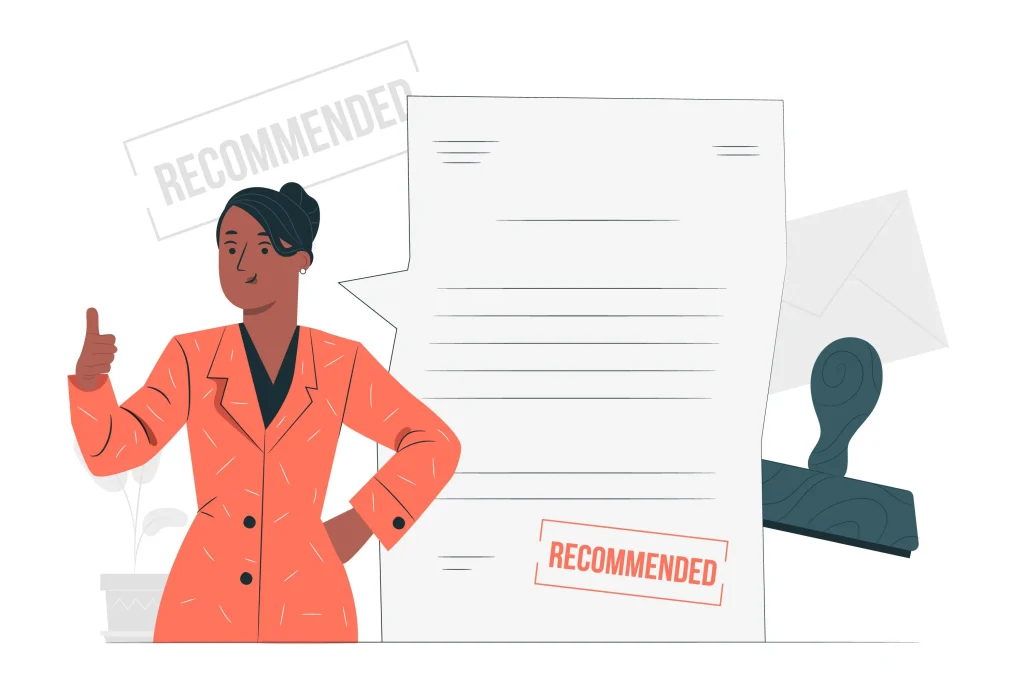
Embarking on the journey of hiring your first employee is a pivotal moment for any burgeoning entrepreneur. It signifies not only the growth of your business but also a transition into a new phase of responsibility and leadership. This comprehensive guide is crafted to navigate you through the intricate process of bringing a new team member on board. From laying the groundwork with meticulous planning to executing effective interviews and finally extending that crucial job offer, this guide will be your compass in the often challenging terrain of human resource management.
Define the Role
Before you search for candidates, clearly define the role you want to fill. Outline the responsibilities, skills, and qualifications required. This will be a foundation for creating a compelling job description and help you identify the ideal candidate.
1. Job Title and Overview
- Start by assigning a clear and accurate job title that reflects the nature of the position.
- Provide a brief overview of the role to give potential candidates an immediate understanding of the job.
2. Key Responsibilities
- Enumerate the primary duties and tasks associated with the role. Be specific and prioritize tasks based on importance.
- Consider the day-to-day activities as well as any long-term projects or responsibilities.
3. Qualifications and Skills
- Clearly outline the educational background, work experience, and skills required for the position.
- Differentiate between “must-have” and “nice-to-have” qualifications to help filter applicants effectively.
4. Reporting Structure
- Specify the reporting hierarchy, indicating to whom the new hire will report and any team members they may supervise.
- Clarify their position within the organizational structure.
5. Goals and Objectives
- Define the goals and objectives associated with the role. This could include specific targets, project milestones, or performance metrics.
- Clearly articulate how the role contributes to the overall success of the team or company.
6. Cultural Fit and Values
- Describe the company culture and values, emphasizing how the new hire’s role aligns with these principles.
- Highlight any specific traits or characteristics contributing to a positive cultural fit.
7. Opportunities for Growth
- Communicate potential avenues for professional development and career advancement within the company.
- Discuss any training programs, mentorship opportunities, or pathways for skill enhancement.
8. Challenges and Expectations
- Address potential challenges associated with the role, providing a realistic job preview.
- Set clear expectations regarding performance standards, deadlines, and challenges the new hire might face.
9. Collaboration and Communication
- Specify how the role interacts with other team members or departments.
- Outline communication channels, emphasizing the importance of collaboration and teamwork.
By thoroughly defining the role, you attract candidates with the right skills and qualifications and set the foundation for a successful working relationship between the new employee and the organization.

Determine Compensation and Benefits
Research industry standards and set a competitive salary for the position. Consider additional benefits such as health insurance, retirement plans, or flexible work arrangements. A comprehensive compensation package will attract top talent and contribute to employee satisfaction.
1. Research Industry Standards
- Conduct thorough research on industry standards for the specific role within your geographical location.
- Consider factors such as experience, education, and skill requirements when benchmarking salaries.
2. Salary Structure
- Decide on the overall salary structure for the position. Consider whether it will be a fixed annual salary, hourly rate, or another compensation model.
- Factor in any performance-based bonuses or incentives tied to individual or company goals.
3. Benefits Package
- Identify and outline the benefits you will offer to employees. Common benefits include health insurance, dental and vision coverage, retirement plans, and paid time off.
- Consider additional perks like flexible work schedules, remote work options, or wellness programs.
4. Market Competitiveness
- Ensure that the total compensation package is competitive within the market. This helps attract and retain top talent.
- Be aware of any trends or changes in compensation and benefits within your industry.
5. Budget Considerations
- Assess your budget to determine the affordability of the proposed compensation and benefits package.
- Consider the long-term financial impact on your business and ensure the package is sustainable.
6. Negotiation Flexibility
- Determine your flexibility in negotiations. Be prepared to discuss and negotiate compensation based on the candidate’s skills, experience, and overall value to the organization.
7. Transparent Communication
- Clearly communicate the compensation and benefits package to potential candidates during the hiring process.
- Be transparent about what is included in the package and any conditions that may affect compensation.
8. Legal Compliance
- Ensure your compensation and benefits package complies with local labor laws and regulations.
- Address any legal requirements related to minimum wage, overtime pay, and other relevant aspects of compensation.
9. Performance Reviews and Adjustments
- Establish a system for performance reviews and potential adjustments to compensation over time.
- Clearly communicate how performance will be evaluated and the criteria for salary increases or bonuses.
10. Employee Input
- Consider seeking input from existing employees or conducting surveys to understand their preferences regarding compensation and benefits.
- This can help tailor your offerings to the needs and expectations of your workforce.
11. Document the Package
- Document the complete compensation and benefits package clearly and concisely.
- Provide this information to candidates during the hiring process and to existing employees for reference.
By carefully considering these aspects, you can create a well-structured and competitive compensation and benefits package that attracts top talent and contributes to employee satisfaction and retention.

Choose the Right Hiring Platform
Decide where to post your job opening based on your target audience. Utilize job boards, professional networking sites, or local community platforms. Leverage social media to reach a broader audience and encourage employee referrals.
1. Identify Target Audience
- Clearly define the characteristics of your ideal candidate.
- Consider factors like industry, job level, and specific skills required.
2. Job Boards
- Utilize general and industry-specific job boards based on the type of position.
- Popular job boards include Indeed, LinkedIn, Glassdoor, and industry-specific boards.
3. Social Media
- Leverage social media platforms such as LinkedIn, Twitter, and Facebook.
- Share job postings, company updates, and engage with potential candidates.
4. Professional Networks
- Tap into professional networks and associations related to your industry.
- Attend industry events, join forums, and participate in networking groups.
5. Company Website
- Ensure your company website has a dedicated careers section.
- Post job openings and provide information about your company culture and values.
6. Employee Referral Programs
- Encourage your existing employees to refer potential candidates.
- Implement a referral program with incentives to motivate employees.
7. Recruitment Agencies
- Consider working with recruitment agencies or headhunters.
- Agencies can help source candidates, conduct initial screenings, and streamline the hiring process.
8. Local Community Platforms
- Explore local community platforms, bulletin boards, or newsletters.
- This can be particularly effective for hiring for positions that benefit from a local presence.
9. University Career Centers
- Partner with university career centers for entry-level or specialized positions.
- Attend career fairs or host informational sessions to connect with potential candidates.
10. Industry-Specific Platforms
- Explore platforms and forums specific to your industry.
- This can help you target candidates with specialized skills and knowledge.
11. Consider Diversity and Inclusion
- Choose platforms that align with your commitment to diversity and inclusion.
- Some platforms specialize in promoting diverse candidate pools.
12. Analytics and Metrics
- Use analytics to track the performance of your job postings.
- Evaluate which platforms generate the most qualified applicants.
13. Budget Considerations
- Consider the budget associated with each hiring platform.
- Evaluate the cost-effectiveness of paid platforms against the reach and quality of candidates they provide.
14. Employer Branding
- Maintain a consistent employer brand across all platforms.
- Ensure that your messaging aligns with your company’s values and culture.
15. Mobile-Friendly Platforms
- Choose platforms that are mobile-friendly, as many candidates search for jobs using mobile devices.
16. Evaluate Effectiveness
- Regularly assess the effectiveness of each platform.
- Adjust your strategy based on the success of previous hires and candidate feedback.
By strategically choosing the right hiring platforms based on your target audience and budget considerations, you can optimize your recruitment efforts and connect with the most suitable candidates for your open positions.

Conduct Effective Interviews
Prepare a list of relevant questions to assess candidates’ skills, experience, and cultural fit. Conduct initial screenings to narrow down the pool of applicants before conducting in-depth interviews. Consider involving key team members in the interview process to gather diverse perspectives.
1. Pre-Interview Preparation
- Familiarize yourself with the candidate’s resume and application.
- Develop a list of questions that assess both technical skills and soft skills.
2. Structured Interview Format
- Use a structured format to ensure consistency across all candidate interviews.
- Have a set list of questions for each candidate, and allow time for follow-up inquiries.
3. Behavioral Questions
- Ask behavioral questions to understand how candidates have handled situations in the past.
- For example, “Can you share an example of a challenging situation at work and how you resolved it?”
4. Technical Assessment
- Incorporate a technical assessment if applicable to the role.
- This could include a coding test, case study, or practical demonstration of skills.
5. Cultural Fit Assessment
- Assess how well the candidate aligns with the company culture and values.
- Ask questions related to teamwork, adaptability, and communication.
6. Clarify Job Expectations
- Clearly communicate the expectations of the role and the company.
- Provide insights into the team structure, growth opportunities, and potential challenges.
7. Active Listening
- Practice active listening during the interview.
- Give the candidate an opportunity to fully express themselves before moving on to the next question.
8. Non-Discriminatory Questions
- Ensure that your questions comply with anti-discrimination laws.
- Avoid questions related to age, gender, marital status, and other protected characteristics.
9. Scenario-based Questions
- Pose scenario-based questions to evaluate problem-solving skills.
- For instance, “How would you handle a tight deadline and unexpected obstacles simultaneously?”
10. Candidate Questions
- Allow time for the candidate to ask questions about the role and company.
- This demonstrates their interest and provides clarity on any uncertainties.
11. Team Involvement
- Involve key team members in the interview process.
- Multiple perspectives can offer a more comprehensive assessment of the candidate.
12. Evaluate Cultural Contribution
- Assess how the candidate can contribute to the overall culture and dynamics of the team.
- Consider their communication style, collaboration skills, and adaptability.
13. Take Notes
- Take detailed notes during and after the interview to aid in the decision-making process.
- Document key responses, observations, and potential concerns.
14. Follow-up Questions
- Be prepared to ask follow-up questions based on the candidate’s responses.
- This allows for a deeper understanding of their experiences and capabilities.
15. Rate and Document Responses
- Develop a rating system to objectively evaluate candidates.
- Use the ratings to compare and contrast candidates after the interview process.
16. Provide Feedback
- Offer constructive feedback to candidates, especially if additional interviews are planned.
- This helps candidates understand areas for improvement.
17. Collaboration with Team
- Collaborate with other team members involved in the interview process to gather diverse perspectives.
- Ensure everyone is aligned on the evaluation criteria.
18. Be Respectful
- Treat candidates with respect and professionalism.
- Create a positive interview experience, regardless of the final hiring decision.
By following these steps, you can conduct interviews that thoroughly assess a candidate’s skills, experiences, and cultural fit, aiding in making informed and effective hiring decisions.

Check References
Verify the information provided by candidates through reference checks. Contact previous employers to gain insights into the candidate’s work ethic, reliability, and interpersonal skills.
1. Request Permission
- Ask the candidate for permission to contact their references.
- Some candidates prefer to inform their references in advance, while others may want to keep it confidential until later stages of the process.
2. Prepare a Reference Check Template
- Develop a reference check template that includes a set of standard questions.
- Tailor questions to gather information relevant to the specific role and the candidate’s performance.
3. Contact Information
- Obtain accurate contact information for the references, including their professional email and phone number.
- Ensure that the references are individuals who directly supervised or worked closely with the candidate.
4. Schedule a Call
- Contact the references to schedule a convenient time for a reference check call.
- Clearly communicate the purpose of the call and the information you are seeking.
5. Professional Etiquette
- Conduct the reference check in a professional and respectful manner.
- Clearly identify yourself, your role, and the organization you represent.
6. Standard Reference Check Questions
- Ask standard questions to gather information on the candidate’s performance, work habits, and interpersonal skills.
- Example questions:
- Can you confirm the candidate’s job title and dates of employment?
- What were the candidate’s main responsibilities and achievements in the role?
- How would you describe the candidate’s work ethic and ability to meet deadlines?
- Example questions:
7. Explore Specific Skills
- Tailor questions to explore specific skills relevant to the role.
- For example, inquire about the candidate’s problem-solving abilities, communication skills, or leadership capabilities.
8. Verify Information
- Confirm the accuracy of information provided by the candidate, such as job titles, responsibilities, and employment dates.
- If there are any discrepancies, seek clarification from the candidate.
9. Seek Examples
- Ask for specific examples or situations that highlight the candidate’s strengths and areas for improvement.
- This provides a more nuanced understanding of the candidate’s performance.
10. Discuss Team Collaboration
- Inquire about how well the candidate collaborated with colleagues and contributed to a team environment.
- Explore their interpersonal skills and ability to work with diverse personalities.
11. Handle Negative Feedback Professionally
- If negative feedback arises, handle it professionally and objectively.
- Ask follow-up questions to gain a more comprehensive understanding and consider the context.
12. Maintain Confidentiality
- Respect the confidentiality of the information obtained during the reference check.
- Only share relevant and anonymized insights with the hiring team.
13. Document Findings
- Take detailed notes during the reference check.
- Document key points, quotes, and any concerns raised by the references.
14. Use Multiple References
- Whenever possible, contact multiple references to gather a well-rounded perspective on the candidate.
- This helps ensure a more comprehensive understanding of their work history.
15. Provide Feedback to Hiring Team
- Share the findings from the reference check with the hiring team.
- Discuss how the information aligns with the candidate’s performance during the interview process.
16. Consider Red Flags
- Pay attention to any red flags or consistent patterns mentioned by multiple references.
- Evaluate the significance of these findings in relation to the overall assessment of the candidate.
17. Be Appreciative
- Express gratitude to the references for their time and insights.
- Maintain a positive and professional relationship with the individuals contacted.
By conducting thorough reference checks, you can validate the information candidates provide, gain a deeper understanding of their past performance, and make more informed hiring decisions.

Ensure Legal Compliance
Familiarize yourself with local employment laws and regulations. Ensure that your hiring process aligns with legal requirements regarding discrimination, equal opportunity, and other relevant employment laws.
1. Familiarize Yourself with Applicable Laws
- Understand the relevant federal, state, and local employment laws that apply to your business.
- Key areas to consider include anti-discrimination laws, wage and hour laws, and regulations governing the hiring process.
2. Develop Non-Discriminatory Policies
- Establish and communicate clear, non-discriminatory policies within your organization.
- Ensure that hiring decisions are based on job-related factors and not influenced by protected characteristics such as race, gender, age, religion, or disability.
3. Equal Employment Opportunity (EEO) Compliance
- Adhere to Equal Employment Opportunity Commission (EEOC) guidelines in the United States or the equivalent in other jurisdictions.
- Avoid asking questions during the hiring process that could lead to discriminatory practices.
4. Provide Reasonable Accommodations
- Familiarize yourself with the concept of reasonable accommodations for candidates with disabilities.
- Be prepared to make adjustments to the hiring process or workplace to accommodate individuals with disabilities, as required by law.
5. Compliance with Fair Labor Standards Act (FLSA)
- Ensure compliance with the Fair Labor Standards Act (FLSA) or equivalent laws in your country.
- This includes adhering to minimum wage requirements, overtime pay, and classification of employees as exempt or non-exempt.
6. Background Check Compliance
- If conducting background checks, comply with the Fair Credit Reporting Act (FCRA) or relevant local laws.
- Obtain consent from candidates before conducting background checks and provide them with the required disclosures.
7. Privacy Laws
- Comply with data protection and privacy laws, such as the General Data Protection Regulation (GDPR) in the European Union.
- Safeguard candidate information and ensure proper consent is obtained for the collection and processing of personal data.
8. Verify Eligibility to Work
- Verify the eligibility of candidates to work in your country.
- Request and retain Form I-9 documentation in the United States or equivalent documentation in other jurisdictions.
9. Avoid Illegal Interview Questions
- Be cautious not to ask illegal interview questions that could lead to discriminatory practices.
- Focus on questions related to job qualifications and avoid inquiries about protected characteristics.
10. Provide Clear Job Descriptions
- Craft clear and accurate job descriptions that outline the essential functions of the role.
- This helps set expectations and ensures that candidates are aware of the requirements.
11. Document the Hiring Process
- Maintain thorough documentation of the entire hiring process.
- This includes records of job postings, applications, interviews, reference checks, and any communication with candidates.
12. Train Hiring Managers
- Train hiring managers and those involved in the hiring process on legal compliance.
- Ensure they are aware of the applicable laws and understand their role in promoting fair and unbiased hiring practices.
13. Monitor Changes in Laws
- Stay informed about changes in employment laws.
- Regularly review and update your hiring practices to align with any legal changes.
14. Seek Legal Advice if Needed
- Consult with legal professionals or human resources experts to ensure your hiring practices are in compliance with the law.
- Seek advice on specific situations that may raise legal concerns.
15. Establish a Complaints Process
- Implement a clear process for handling complaints related to the hiring process.
- Investigate and address any complaints promptly to maintain a fair and lawful workplace.
Proactively addressing legal considerations throughout the hiring process, you help create a fair and inclusive environment while minimizing the risk of legal challenges and penalties.

Extend the Job Offer
Once you’ve identified the right candidate, extend a formal job offer. Clearly outline the terms of employment, including start date, salary, and any additional benefits. Be prepared to negotiate and make adjustments if necessary.
1. Decision-Making and Internal Approval
- Confirm that the decision to extend an offer has received necessary internal approvals.
- Ensure that the terms of the offer align with the budget and the organization’s hiring policies.
2. Prepare the Job Offer
- Draft a comprehensive job offer letter that includes key details such as position title, start date, salary, benefits, and any conditions of employment.
- Clearly outline the terms and expectations to avoid misunderstandings.
3. Personalize the Offer
- Personalize the offer by addressing the candidate by name and expressing enthusiasm about welcoming them to the team.
- Reiterate specific strengths and qualities that make the candidate an excellent fit for the role.
4. Include Legal and Policy Information
- Include any legal and policy-related information, such as at-will employment status, non-disclosure agreements, or any other relevant clauses.
- Ensure that the offer complies with employment laws and regulations.
5. Set a Reasonable Response Deadline
- Set a reasonable deadline for the candidate to respond to the offer.
- Consider providing flexibility if the candidate needs additional time for decision-making.
6. Coordinate with HR
- Coordinate with the human resources department to ensure that all necessary documentation and paperwork are prepared.
- Discuss any additional onboarding requirements or processes.
7. Contact the Candidate
- Personally contact the candidate to extend the offer.
- Use a professional and positive tone, expressing excitement about the possibility of them joining the team.
8. Provide Offer Details
- Clearly communicate the details of the offer, including compensation, benefits, start date, and any other relevant information.
- Be prepared to answer any questions the candidate may have.
9. Address Negotiations
- Be open to negotiation but have a clear understanding of the limits and constraints.
- If the candidate requests changes to the offer, discuss the feasibility and seek internal approvals if necessary.
10. Follow Up in Writing
- Formalize the offer by sending a written offer letter or email.
- Reiterate the key terms, express enthusiasm, and include any necessary attachments, such as an employee handbook or additional forms.
11. Keep Communication Open
- Maintain open communication with the candidate throughout the offer stage.
- Address any concerns or questions promptly to alleviate any potential hesitations.
12. Discuss Next Steps
- Clearly outline the next steps in the hiring process, such as the candidate’s acceptance, the signing of the offer letter, and any pre-employment requirements.
13. Confirm Receipt of Offer
- Confirm that the candidate has received and understood the offer.
- Encourage them to reach out with any additional questions or clarifications.
14. Notify Unsuccessful Candidates
- Once the offer is accepted, promptly notify other candidates who were part of the final selection process.
- Provide feedback and express appreciation for their interest in the position.
15. Initiate Onboarding Process
- Initiate the onboarding process, including paperwork, orientation schedules, and any necessary training.
- Prepare for the candidate’s arrival to ensure a smooth transition into the organization.
16. Celebrate and Welcome
- Celebrate the acceptance of the offer and extend a warm welcome to the new employee.
- Facilitate introductions to the team and ensure that the onboarding process is positive and inclusive.
By carefully navigating the job offer stage with clear communication, attention to detail, and responsiveness, you contribute to a positive candidate experience and set the foundation for a successful and engaged new employee.

Onboarding Process
Develop a structured onboarding process to help your new employee integrate seamlessly into the company. Provide necessary training, introduce them to the team, and establish clear communication channels.
1. Welcome and Orientation
- Begin with a warm welcome on the first day.
- Conduct an orientation session to introduce the new employee to the company’s mission, values, and organizational structure.
2. Provide Necessary Documentation
- Complete any required paperwork related to employment, benefits, and compliance.
- Clearly explain company policies, including codes of conduct and expectations.
3. Introduce the Team
- Facilitate introductions to team members and key stakeholders.
- Organize a team meeting or lunch to encourage a sense of camaraderie and integration.
4. Assign a Mentor or Buddy
- Assign a mentor or buddy to help the new employee navigate the workplace.
- This provides a go-to person for questions and support during the initial weeks.
5. Overview of Job Responsibilities
- Review the new employee’s job responsibilities in detail.
- Discuss performance expectations, key performance indicators (KPIs), and any specific projects they will be involved in.
6. Training and Skill Development
- Provide training sessions to familiarize the new employee with company tools, software, and processes.
- Identify any additional training needs and create a plan for ongoing skill development.
7. Company Culture and Values
- Emphasize the company’s culture and values.
- Share success stories, highlight employee achievements, and reinforce the importance of the company’s mission.
8. Workspace Setup
- Ensure that the new employee’s workspace is set up with the necessary equipment and resources.
- Provide a tour of the office, pointing out key areas such as restrooms, break rooms, and emergency exits.
9. IT and Security Protocols
- Review IT and security protocols.
- Ensure that the new employee understands cybersecurity measures, password policies, and how to access company networks.
10. Schedule Check-ins
- Schedule regular check-ins with the new employee during the initial weeks.
- Address any questions or concerns they may have and gather feedback on their onboarding experience.
11. Social Integration
- Facilitate social activities to help the new employee build connections.
- Organize team lunches, social events, or after-work activities to foster a sense of belonging.
12. Set Clear Expectations
- Clearly communicate performance expectations and goals.
- Provide a roadmap for career development and discuss potential growth opportunities within the organization.
13. Feedback Mechanism
- Establish an open feedback mechanism.
- Encourage the new employee to share their thoughts on the onboarding process and their overall experience.
14. Continuous Improvement
- Use feedback to continuously improve the onboarding process.
- Adapt the process based on insights from new hires to enhance its effectiveness.
15. Company Policies and Resources
- Ensure that the new employee is aware of and has access to company policies, employee handbooks, and resources.
- Cover important topics such as vacation policies, sick leave, and other employee benefits.
16. Legal Compliance Training
- Provide training on legal compliance, including anti-discrimination policies, workplace safety, and any industry-specific regulations.
17. Performance Expectations Review
- Conduct a performance expectations review at the end of the initial period.
- Discuss achievements, areas for improvement, and set goals for the upcoming months.
18. Celebrate Milestones
- Celebrate key milestones, such as the completion of the probationary period or successful completion of a significant project.
- Acknowledge and appreciate the new employee’s contributions.
By implementing a comprehensive onboarding process, you not only help new employees integrate smoothly into the organization but also contribute to their engagement, satisfaction, and long-term success within the company.
Conclusion
The guide has equipped you with the tools to navigate the intricacies of the hiring process, ensuring that you not only attract top talent but also foster an environment where employees can thrive. Remember that the success of your business is inherently tied to the strength and dedication of your team. Continue to refine your hiring processes, embrace the diversity and potential of your workforce, and cultivate a workplace culture that encourages collaboration and innovation.
As you welcome your first employee, recognize that this is not just a moment in your business journey but the commencement of a collaborative effort toward shared goals and accomplishments. May your team grow and prosper, driving your business’s success to new heights. Cheers to your entrepreneurial journey and the exciting chapters that lie ahead!
This article was created by the FirstHR team. You can find even more helpful HR tips in the Guides section. In the Template section we have prepared for you the most popular HR documents that you can download for free. Enjoy!





